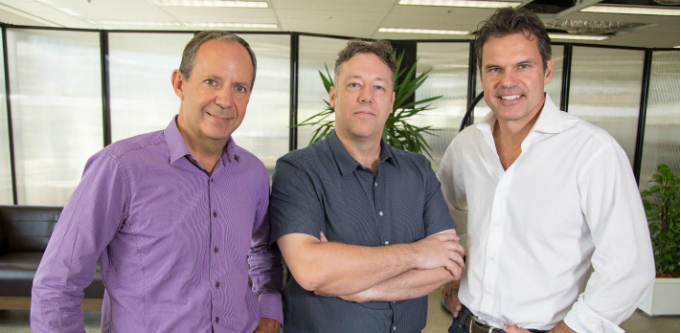
Investfit founders James Claridge, Gavin Daw and Ed de Salis
Startup founders should get really familiar with terms sheets before walking into a negotiation with a venture capital investor, according to Investfit founder James Claridge, who raised $1.25 million for his venture in late 2016.
“Get familiar with the key conditions and terms,” Claridge tells StartupSmart.
“You don’t have to know all of them inside-out but understand the basics.”
Claridge, who founded Sydney-based Investfit in 2014 with Ed de Salis and Gavin Daw, says it’s a piece of advice he would’ve benefited from before he began raising capital.
Despite this, the trio managed to secure a Series A funding round within six months of meeting major venture capital firm Sapien Ventures, which led the round.
Claridge says Sapien Ventures has been an “extremely important collaborator” for Investfit, which uses predictive analytics to help financial service providers and their clients make smarter decisions on wealth management and investment.
The startup recently signed on Mortgage Choice and $50 million fund BMY Group and is translating its application into Mandarin to target Chinese customers.
“Sapien has already introduced us to clients and is helping with our business,” Claridge says.
Reflecting on the experience, Claridge shares four practical tips for startups raising capital now.
1. Give away equity for the right investor
Claridge, who had experience capital raising before doing it for his venture, says many founders miss out on great opportunities by being too protective of equity.
“Be prepared to give away equity,” he says.
“A lot of startups go, ‘this is my baby I wont do it’.”
But when you meet the right investor, he says, it’s more than a bit of cash that will be on the table and founders should be prepared to give away a percentage that makes sense for an investor to enter the deal.
With Investfit, Claridge says, a “good chunk” of equity was given to Sapien Ventures but the outcomes have been “extremely positive”.
“Our chances of success now are massively higher,” he says.
“I feel we’ve got a really strong partner who will definitely help us with more than just the money.”
2. Look into your future
Revenue projections are an important part of pitching to investors, says Claridge.
“For startups, that’s really hard because it’s a question of ball gazing [and] the VCs understand that too,” he says.
While it may seem impossible to know what will happen in future, Claridge says, founders need to forecast when the startup will make sales and over what period.
“Its useful because it concentrates your focus on sales and marketing and [generating] a pipeline that will produce revenue flow that is investible,” he says.
“It’s all crystal gazing but it’s a good discipline to go through.”
3. Know your value
Before raising capital, founders must have robust understanding of the core value of their product or service, says Claridge, and good investors will “hold you to account on that”.
“[Be] very clear about the value proposition for your product and [be] very clear about who will buy it and why,” he says.
In addition to pricing and a distribution plan, founders must demonstrate why a client would “bother changing from what they’re using now” to the startup’s offering.
“If you’re not clear about the fundamental value [of your startup], you’re probably barking up the wrong tree,” he says.
4. Forget being perfect and get into the market
Founders should be careful about the pursuit of perfection as it can make them “miss the market” entirely, says Claridge.
“Startup land is hard, it takes a long time and you’ve got to be prepared to make mistakes,” he says.
“Forging on is part of the deal and you also need to avoid the temptation to build the perfect product … you can add bells and whistles later on.”
Follow StartupSmart on Facebook, Twitter, LinkedIn and iTunes.


COMMENTS
SmartCompany is committed to hosting lively discussions. Help us keep the conversation useful, interesting and welcoming. We aim to publish comments quickly in the interest of promoting robust conversation, but we’re a small team and we deploy filters to protect against legal risk. Occasionally your comment may be held up while it is being reviewed, but we’re working as fast as we can to keep the conversation rolling.
The SmartCompany comment section is members-only content. Please subscribe to leave a comment.
The SmartCompany comment section is members-only content. Please login to leave a comment.